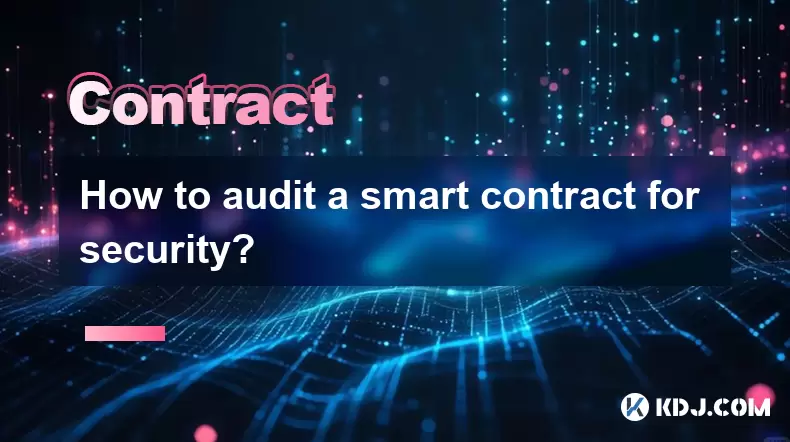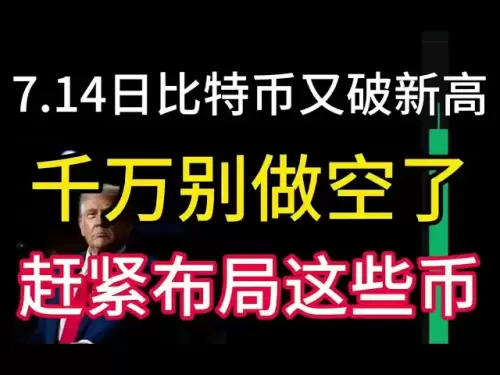-
 Bitcoin
Bitcoin $121,528.0299
2.98% -
 Ethereum
Ethereum $3,068.2796
3.56% -
 XRP
XRP $2.9875
7.26% -
 Tether USDt
Tether USDt $1.0001
-0.01% -
 BNB
BNB $704.3033
2.01% -
 Solana
Solana $166.8292
2.88% -
 USDC
USDC $0.9998
0.00% -
 Dogecoin
Dogecoin $0.2063
3.87% -
 TRON
TRON $0.3027
-0.01% -
 Cardano
Cardano $0.7480
2.62% -
 Hyperliquid
Hyperliquid $48.3868
0.88% -
 Stellar
Stellar $0.4534
6.74% -
 Sui
Sui $3.9316
14.29% -
 Chainlink
Chainlink $16.2437
5.70% -
 Bitcoin Cash
Bitcoin Cash $513.4177
1.89% -
 Hedera
Hedera $0.2398
4.90% -
 Avalanche
Avalanche $21.7489
2.41% -
 UNUS SED LEO
UNUS SED LEO $9.0122
-0.22% -
 Shiba Inu
Shiba Inu $0.0...01375
3.85% -
 Toncoin
Toncoin $3.0263
0.37% -
 Litecoin
Litecoin $97.1823
2.52% -
 Polkadot
Polkadot $4.1006
3.53% -
 Monero
Monero $350.5690
4.05% -
 Uniswap
Uniswap $9.5209
12.39% -
 Dai
Dai $0.9997
-0.03% -
 Ethena USDe
Ethena USDe $1.0003
-0.04% -
 Pepe
Pepe $0.0...01257
2.00% -
 Bitget Token
Bitget Token $4.4824
2.65% -
 Aave
Aave $325.5161
7.61% -
 Bittensor
Bittensor $418.6689
6.29%
How to audit a smart contract for security?
Smart contract security auditing is essential for identifying vulnerabilities in blockchain code to prevent exploits and financial losses.
Jul 12, 2025 at 10:07 am

What is Smart Contract Security Auditing?
Smart contract security auditing refers to the process of thoroughly examining and analyzing the code of a blockchain-based smart contract to identify potential vulnerabilities, bugs, or malicious logic that could lead to exploits or financial losses. This practice is crucial in the cryptocurrency space, especially for projects deploying decentralized applications (dApps) on platforms like Ethereum, Binance Smart Chain, or Solana. The goal is to ensure that the contract behaves exactly as intended without exposing users' funds or data to risks.
Why Is Smart Contract Auditing Important?
In the world of cryptocurrency, once a smart contract is deployed on the blockchain, it cannot be altered unless explicitly designed with upgradability features. This immutability makes any flaws or bugs permanent, potentially leading to irreversible loss of assets. High-profile hacks such as the DAO hack and multiple DeFi exploits have demonstrated how critical it is to perform rigorous audits before deployment. Auditing helps detect issues like reentrancy attacks, integer overflows, improper access controls, and other common pitfalls.
Common Vulnerabilities Found During Smart Contract Audits
Auditors typically look for well-known vulnerabilities that have been exploited in the past. Some of these include:
- Reentrancy: When an external contract call allows malicious actors to repeatedly re-enter the function before execution completes, often draining funds.
- Integer Overflow/Underflow: Occurs when arithmetic operations exceed the maximum or minimum value of a number type, leading to unexpected behavior.
- Unprotected Functions: Functions lacking proper access control can allow unauthorized users to execute privileged actions.
- Front-running: Where attackers exploit transaction ordering to manipulate contract state for profit.
- Timestamp Dependence: Contracts relying on block timestamps can be manipulated by miners.
Identifying these during an audit is essential for ensuring the integrity and safety of the smart contract.
Tools Used in Smart Contract Auditing
Several tools are available to assist auditors in identifying security issues within smart contracts:
- Slither: A Solidity static analysis framework that detects various vulnerabilities using predefined detectors.
- Oyente: An early tool that analyzes Ethereum contracts for known vulnerabilities.
- Securify: A tool developed by researchers that checks compliance with specific security patterns.
- Mythril: A symbolic analyzer for EVM bytecode that helps find security issues through taint analysis.
- Solhint: A linter for Solidity that enforces best practices and identifies suspicious patterns.
These tools automate parts of the auditing process but should be used alongside manual review to catch complex logical flaws not detectable via automated means.
Manual Code Review: The Core of Smart Contract Auditing
While automated tools are valuable, they cannot replace the depth of a manual code review. Experienced auditors analyze each line of code to understand the business logic and spot inconsistencies or edge cases. They assess:
- Control flow and state transitions
- Proper use of modifiers and visibility specifiers
- Safe handling of external calls and callbacks
- Correct implementation of token transfers and ownership models
This step requires deep expertise in both programming and blockchain-specific threats. Auditors often simulate different attack vectors to test whether the contract holds under adversarial conditions.
Best Practices for Conducting a Smart Contract Audit
To conduct a comprehensive audit, certain best practices must be followed:
- Review Documentation: Understand the intended behavior of the contract from whitepapers, specs, and comments.
- Use Multiple Tools: Employ several static and dynamic analysis tools to cross-validate findings.
- Test Thoroughly: Write extensive unit tests and integration tests to simulate real-world scenarios.
- Check External Dependencies: Ensure third-party libraries and interfaces are secure and trusted.
- Verify Compiler Settings: Confirm that the compiler version and optimization settings match those used in development to avoid discrepancies.
These practices help ensure that no stone is left unturned during the audit process.
Engaging Professional Audit Firms
For high-stakes deployments, many teams opt to hire professional smart contract audit firms. These organizations specialize in blockchain security and offer services ranging from code reviews to penetration testing. Reputable firms include:
- CertiK
- Trail of Bits
- Quantstamp
- OpenZeppelin
- PeckShield
Working with such experts provides an additional layer of assurance, particularly for large-scale DeFi protocols, NFT marketplaces, and enterprise-grade blockchain solutions.
Frequently Asked Questions (FAQs)
Q: Can I audit my own smart contract without professional help?
Yes, you can perform a self-audit using open-source tools like Slither, Mythril, and Solhint, along with writing thorough unit tests. However, this approach requires a strong understanding of Solidity security principles and common attack vectors. It's always recommended to get a second opinion from experienced developers or professionals for critical contracts.
Q: How long does a smart contract audit take?
The duration varies depending on the complexity and length of the contract. Simple contracts may take only a few hours, while more complex systems involving multiple interacting contracts can take days or even weeks. Time also depends on the depth of analysis—whether it includes formal verification, fuzzing, or simulation of edge cases.
Q: Are all vulnerabilities found during an audit fixable?
Most vulnerabilities identified during an audit can be mitigated or fixed through code changes. However, some architectural weaknesses may require redesigning certain components of the contract. In rare cases where the contract lacks upgradeability and contains critical flaws, redeployment might be necessary.
Q: Should I audit every version of my contract?
Yes, every new version of a smart contract should undergo a fresh audit, especially if there have been significant changes to logic, dependencies, or structure. Even minor updates can introduce new vulnerabilities, so continuous auditing is a key part of maintaining blockchain application security.
Disclaimer:info@kdj.com
The information provided is not trading advice. kdj.com does not assume any responsibility for any investments made based on the information provided in this article. Cryptocurrencies are highly volatile and it is highly recommended that you invest with caution after thorough research!
If you believe that the content used on this website infringes your copyright, please contact us immediately (info@kdj.com) and we will delete it promptly.
- Bitcoin, Crypto, and the Smartest Bet: Navigating the Digital Frontier
- 2025-07-14 20:30:11
- Crypto Market Soars: Bitcoin Shatters Records Amid Policy Optimism
- 2025-07-14 20:30:11
- Smokin' Crypto Tokens: Riding the Wave of New Tech and Big Money
- 2025-07-14 18:50:12
- Crypto Presale Heats Up: BlockchainFX Aims to Outpace Shiba Inu, Challenging Binance
- 2025-07-14 19:30:11
- Dogecoin's Howl: Price Surge, Crypto Beat, and What's Next for the Meme Coin
- 2025-07-14 19:50:12
- Satoshi's Fortune: Bitcoin's ATH Propels Creator Up Billionaires List
- 2025-07-14 19:50:12
Related knowledge

Psychology of trading Bitcoin contracts
Jul 13,2025 at 02:50am
Understanding the Emotional Rollercoaster of Bitcoin Futures TradingBitcoin contract trading, especially in the form of futures, introduces a high lev...

Best time of day to trade Bitcoin contracts?
Jul 13,2025 at 05:29am
Understanding Bitcoin Contracts and Their VolatilityBitcoin contracts, particularly futures contracts, are derivative instruments that allow traders t...

How to use Fibonacci levels in Bitcoin contract trading?
Jul 13,2025 at 08:07am
Understanding Fibonacci Levels in TradingFibonacci levels are a technical analysis tool used by traders to identify potential support and resistance z...

Understanding the Bitcoin futures term structure
Jul 13,2025 at 08:28am
What is Bitcoin Futures Term Structure?The Bitcoin futures term structure refers to the relationship between the prices of Bitcoin futures contracts w...

What are the trading hours for Bitcoin futures?
Jul 13,2025 at 12:14pm
Understanding Bitcoin Futures Trading HoursBitcoin futures are derivative contracts that allow traders to speculate on the future price of Bitcoin wit...

Is it possible to trade Bitcoin contracts without leverage?
Jul 14,2025 at 11:00am
Understanding Bitcoin ContractsBitcoin contracts, commonly referred to as Bitcoin futures contracts, are derivative financial instruments that allow t...

Psychology of trading Bitcoin contracts
Jul 13,2025 at 02:50am
Understanding the Emotional Rollercoaster of Bitcoin Futures TradingBitcoin contract trading, especially in the form of futures, introduces a high lev...

Best time of day to trade Bitcoin contracts?
Jul 13,2025 at 05:29am
Understanding Bitcoin Contracts and Their VolatilityBitcoin contracts, particularly futures contracts, are derivative instruments that allow traders t...

How to use Fibonacci levels in Bitcoin contract trading?
Jul 13,2025 at 08:07am
Understanding Fibonacci Levels in TradingFibonacci levels are a technical analysis tool used by traders to identify potential support and resistance z...

Understanding the Bitcoin futures term structure
Jul 13,2025 at 08:28am
What is Bitcoin Futures Term Structure?The Bitcoin futures term structure refers to the relationship between the prices of Bitcoin futures contracts w...

What are the trading hours for Bitcoin futures?
Jul 13,2025 at 12:14pm
Understanding Bitcoin Futures Trading HoursBitcoin futures are derivative contracts that allow traders to speculate on the future price of Bitcoin wit...

Is it possible to trade Bitcoin contracts without leverage?
Jul 14,2025 at 11:00am
Understanding Bitcoin ContractsBitcoin contracts, commonly referred to as Bitcoin futures contracts, are derivative financial instruments that allow t...
See all articles

























































































